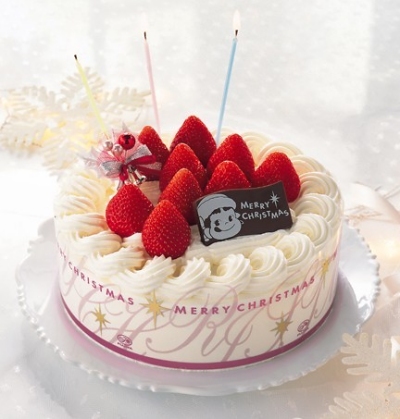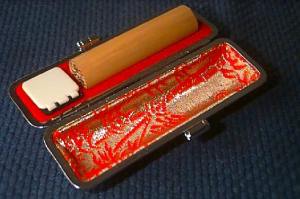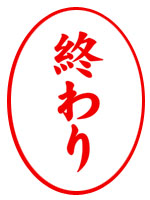Christmas and the New Year are drawing close, so this would be a good time to talk about how they differ in that land known as Japan. I’m certain that these are two holidays every reader is familiar with. Exchanging presents under the Christmas tree with family, going out and getting drunk on New Year’s Eve with the hope of a midnight kiss. For many Christmas also holds religious significance as a celebration of the birth of Jesus Christ, and special Christmas services are held. Safe to say in the Western world Christmas is a religious holiday meant to be spent with the family, while New Year’s is a secular holiday usually spent with friends or even a date. In Japan, these roles are reversed.
Christmas is a wholly Western holiday, and was imported into Japan as such. Being as the Christian population in Japan is so small (about 1%) the holiday doesn’t hold any religious significance for most. The commercial aspect is observed, and many families will set up a Christmas tree (usually artificial) and talk about Santa. Presents are not left under the tree, however. Parents usually leave only one present, and put that at the head of their child’s bed.
For the single population, Christmas is a very big dating holiday. Much like Valentine’s Day in the United States (another holiday which is celebrated much differently in Japan) many people are in a rush to find a date for Christmas. I have heard stories of girls getting into relationships just before Christmas, only to break up with the guy right afterward. If you are in a relationship an extravagant and usually expensive date is expected. They may go out to a fancy restaurant or even stay at a nice hotel, and an exchange of presents is must. The man is expected to buy the woman something very nice, usually jewelery. Wonderful if you are in love, but otherwise a lucrative scheme for those who would exploit it. Real or not, Christmas in Japan is for lovers.
There’s one slightly unusual tradition that is part of Christmas in Japan that I can’t quite explain. Somehow cake has become a necessity on Christmas in Japan. That’s right, Christmas cake. Additionally, Kentucky Fried Chicken is the meal of choice for many on Christmas. For many Japanese people, Christmas means KFC and cake. I cannnot tell you why.
New Year’s- unlike Christmas- has existed and been celebrated in Japan long before Western influence, and remains largely unaffected by such. In Japan it is called Oshogatsu, and focuses more on the three days following the beginning of the New Year rather than the night prior. People beginning pouring into their local temples and Shinto shrines as early as the stroke of midnight, with assistance from the trains that run for twenty four hours on this day only. They aim to make their first prayers of the year in hopes to curry the favor of the local dieties and have a successful year. Lines to enter shrines can be as long as three hours long, noting the significance of this religious holiday. After visiting the shrines people gather with their families and have a large meal, often an array of sushi or something equally upscale. A special type of mochi, slightly different than the dessert type, is eaten as well, to promote good fortune.
This is also an excellent time for TV lovers, as networks run marathons of their most popular programs over the three days of Oshogatsu. For tourists, the holiday may be a bit disappointing. Almost all shops and restaurants are closed, though the Imperial Palace does open its grounds to visitors on January 2nd, one of only two times that happens every year. Yet there is no ball drop, no count down and no partying in the street unless you seek out the specific places that cater to foreigners or the party crowd. In Japan, New Year’s is a time for families.



 Given the polite and generally demure nature and customs of the Japanese people, parts of restaurant etiquette are sure to put you for a loop. I’m not talking about how you’re not supposed to tip, which you probably already know. If you didn’t already know, you’re not supposed to tip. The Japanese don’t do that, and it’s kind of taken as an insult. It’s like you’re pitying them and giving them charity, but in a patronizing fashion. What I’m talking about is calling for your waitress.
Given the polite and generally demure nature and customs of the Japanese people, parts of restaurant etiquette are sure to put you for a loop. I’m not talking about how you’re not supposed to tip, which you probably already know. If you didn’t already know, you’re not supposed to tip. The Japanese don’t do that, and it’s kind of taken as an insult. It’s like you’re pitying them and giving them charity, but in a patronizing fashion. What I’m talking about is calling for your waitress.
 My first visit to Tokyo was in August, during Oubon. The combination of the intense heat and exodus of city dwellers to their hometowns for the holiday left the city rather empty. Many shops were closed, and it was obvious that business was slow overall.
My first visit to Tokyo was in August, during Oubon. The combination of the intense heat and exodus of city dwellers to their hometowns for the holiday left the city rather empty. Many shops were closed, and it was obvious that business was slow overall.
Recent Comments